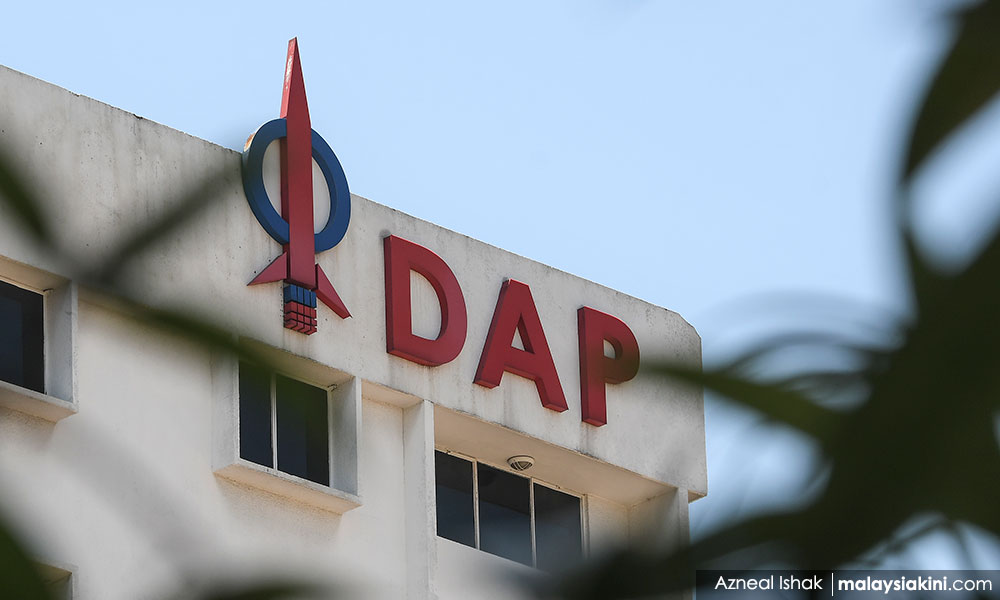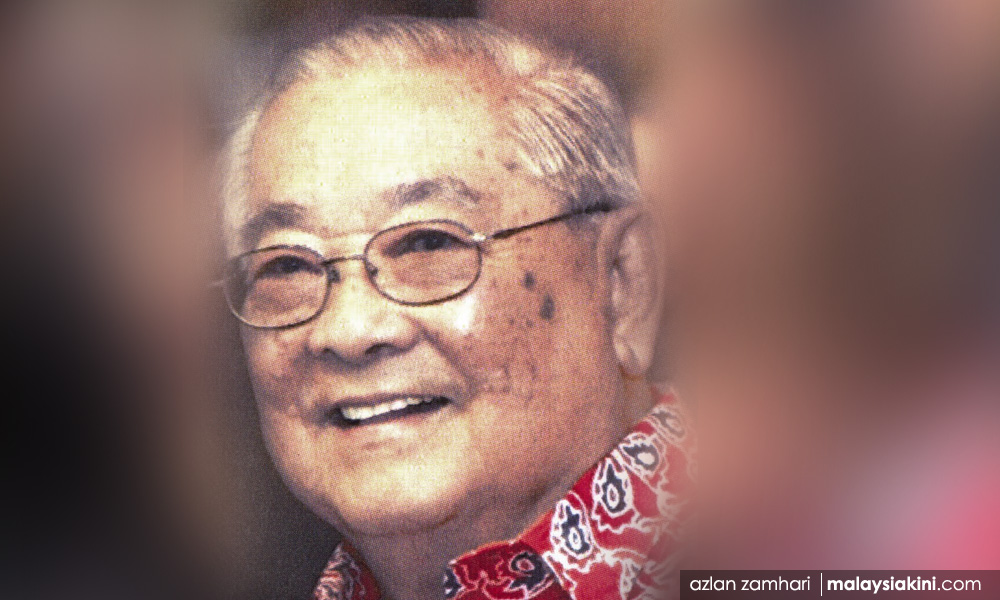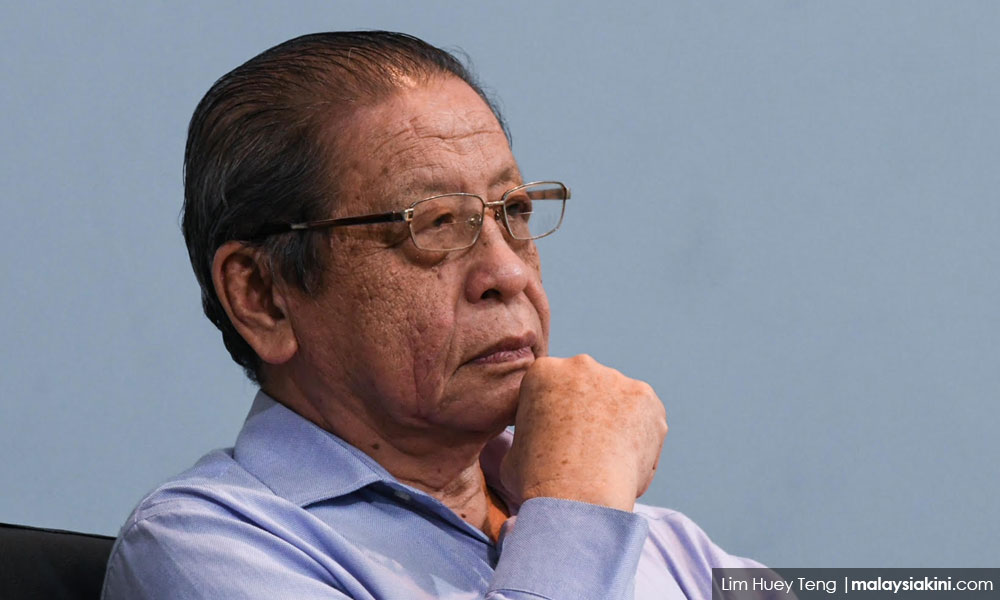Going beyond a 'Malaysian Malaysia'
Kit (Lim Kit Siang) defined DAP’s vision for a Malaysia that belongs to all from very early on. Much as the party is maligned as fighting for non- Malay interests through the ‘Malaysian Malaysia’ idea, particularly that of the Chinese, the vision he laid out in the 1960s and continues to uphold is much more than the caricature version put forward by his opponents.
To him, on the one hand, it is about convincing the Malays that Malaysia is also home to non-Malays as they love this nation as much as anyone else; on the other hand, it is also about convincing the non-Malays that the struggle is not to fight for any racial interest but for the common interest of all Malaysians.
On the Malay front, the opponents were Malay right-wing groups, including many in Umno who saw non-Malays as outsiders to our nationhood and sowed anxieties among Malays that non- Malays were threatening their future. There was this idea that the nation had to be dominated by one language and one culture, to the exclusion of other elements.
On the non-Malay front, groups like MCA and MIC kept pushing the idea that the Chinese and Indians needed protectors, thus justifying their existence in the Alliance ruling coalition to protect the Chinese and Indians from the so-called threat of the Malays.
Positions on these issues were expressed in the Setapak Declaration of 1967, including affirming the commitment of DAP to building a creative and harmonious nation that provided the only way of national integration, not national disintegration, and objecting to a ‘bumiputera’ versus ‘non-bumiputera’ dichotomy.
While it is true the party made its stand in 1967 that ‘the DAP is irrevocably committed to the ideal of a free, democratic and socialist Malaysia, based on the principles of racial equality, and social and economic justice, and founded on the institutions of parliamentary democracy', political scenarios, situations and realities have evolved a lot in more than half a century.
Indeed, DAP is still committed to its principles but it also accepts the realities of Malaysia. In fact, in 1967 itself, the Setapak Declaration explained that to achieve its aims, DAP could not do it on its own by having the support of one particular community only, ‘...we believe that it is possible to mobilise the support of the big majority of the multi-racial people of Malaysia in the pursuit of this aim, and we shall regard it as our primary objective to mobilise such support’. Hence, the party should focus on the gaps between the ‘haves’ and ‘have-nots’.

The declaration concluded that ‘...the politics of the Alliance have been the politics of communal segmentation and division. We see it as the primary duty of all Malaysians, who desire the survival of their country, to counter the segmenting and dividing politics of the Alliance with the politics of creative and dynamic multi-racial integration at all levels - politics, social, economic and cultural.
'Those who are communalists in mind and spirit can never hope to contribute to the nation-building process. Only those Malaysians can take up this process, who have affected the integral transformation in their own minds and spirits, and who therefore possess a creative and harmonising spirit of national construction.
Racial politics
'Otherwise, everything must welter in a general confusion and discord, out of which it will be impossible to build a general harmonic life of the nation. It is to this sacred task of creative and constructive nation-building that we in the DAP dedicate ourselves,’ reads the declaration.
Contrary to popular belief, even among DAP members, the phrase ‘Malaysian Malaysia’ exists in neither the party constitution nor the Setapak Declaration. The original slogan was coined by Lee Kuan Yew’s PAP when the Singapore-based party was in Malaysia between 1963-65.
It was Lee’s attempt to challenge the Alliance’s compromise on racial politics in the peninsula with demands on racial equality. Since then, demographics and political challenges have evolved over the years. On Nov 11, 1995, when addressing the DAP congress after the April election debacle, Kit made a poignant message about the need for the party to move beyond the Malaysian Malaysia idea.
“The time has come for the DAP to go beyond the Malaysian Malaysia objective in the new phase of our political struggle. Without the Malaysian Malaysia political struggle, there would be no ‘minor liberalisation’ in language, education and culture or the conditions for economic buoyancy in the past eight years. The DAP is not content with minor liberalisation and wants a full liberalisation in nation-building policies for the 21st century. However, we must recognise that the accent of the 21st century would be on how Malaysians, regardless of race, could position themselves at the cutting edge of technology to propel Malaysia into the information-intensive society.”

Kit was far-sighted. He could see that the DAP needed to change to suit the new time. But, to a large extent, those words fell on deaf ears and the party sleepwalked into its most serious crisis ever in 1998.
On Nov 24, 1968, Kit had a definitive six-and-a-half-hour marathon debate with Dr Syed Naquib Al-Attas from Gerakan on the question of what constituted Malaysian culture at the Mara Auditorium in Kuala Lumpur. Syed Naquib, the younger brother of the late academician Syed Hussein Alatas, is a popular Muslim scholar who co-founded the National University of Malaysia.
Syed Hussein formed Gerakan with Dr Tan Chee Khoon, Dr JBA Peter, Dr Lim Chong Eu, academician Wang Gungwu, and V Veerapan in 1968. Syed Naquib was of the view that Malaysian literature should not include non-Malay languages and must be Malay in essence while Kit was arguing for multiculturalism and multilingual cultural democracy.
“We are anti-Malay chauvinism, just as we are anti-Chinese chauvinism or anti-Indian chauvinism. We will be vigorously opposed to any call to make Chinese or Indian culture the basis of Malaysian culture, or any call that Malaysian literature can only be written in the Indian and Chinese languages,” Kit said. The debate was chaired by PPP president DR Seenivasagam.
Malaysian first
DAP was represented by Kit, Goh Hock Guan, Ernest Devadason and K Siladass. Fan Yew Teng took Siladass’s seat after the initial round. Gerakan was represented by Syed Naquib, Chee Khoon, Chong Eu and Peter. Through the debate, Kit made his name known in the national political circle.
Another incident that propelled Kit’s popularity among the public was the national 100,000 signature campaign to save the lives of the 13 condemned Malay and Chinese youths, six of whom were below 21 years old at the time of capture and who were later convicted and sentenced to death for consorting with the Indonesian military forces during the Konfrontasi in 1964 and 1965.
Kit’s reasoning was that since July 1968, the Indonesian generals who fought against Malaysia were welcomed as national guests while the masterminds who recruited the Malaysian youth were let off scot-free, this group of youths should instead be given life sentences and a second chance in life. With pioneer woman lawyer PG Lim defending the youths, within a month, the government announced steps to reprieve the death sentence of the 13 condemned.

Whatever the fight Kit takes on, it is always about being a Malaysian first. He doesn’t see a person as either a Chinese or a Malay but rather as an equal Malaysian citizen. He fights against communalism and injustice. The Setapak Declaration criticised both the communist left and the right-wing Alliance approaches:
‘One of the major reasons for the failure of the armed insurrection initiated by the Malayan Communist Party in 1948 was the fact that the communists committed the great mistake of thinking that success was possible on the basis of appealing to the susceptibilities of only one section or one community - the Chinese - while ignoring the susceptibilities or the aspirations of the other communities.
'The communists discovered to their cost that in the absence of a multi-racial national base, they were inevitably denied national success. We see the Alliance government also failing, eventually, for the same reason - that they show a readiness to pander to the racialist gallery of a particular community while ignoring, if not actively offending against, the rights, susceptibilities and aspirations of other communities,’ Kit said.
In January 2016, Kit reiterated a similar point, “We must be aware that in our country today, in a plural society there are Chinese who are living completely in the Chinese world. There are Malays who live completely in the Malay world. There are Indians who live completely in an Indian world.
"The same thing with Kadazans and Ibans. And it is our job to reach them, for them to see a larger Malaysian picture. You must dare to do such a mission... it’s not easy. It could be difficult; you may even fail. But if we do nothing, are we going to succeed?” - Mkini
LIEW CHIN TONG is the author of the book Lim Kit Siang: Patriot. Leader. Fighter. from which the above excerpt is taken from.
The views expressed here are those of the author/contributor and do not necessarily represent the views of MMKtT.
✍ Credit given to the original owner of this post : ☕ Malaysians Must Know the TRUTH
🌐 Hit This Link To Find Out More On Their Articles...🏄🏻♀️ Enjoy Surfing!




















Post a Comment